
- Home
- Research
- Find research
- Four cancer researchers awarded grants from the Sjöberg Foundation
Four cancer researchers awarded grants from the Sjöberg Foundation
The Sjöberg Foundation has awarded SEK 15 million to four cancer researchers at the University of Gothenburg: Roger Olofsson Bagge, Anders Ståhlberg, Barbro Linderholm, and Lisa Tuomi. The research will improve treatment for patients with ocular melanoma, sarcoma, breast cancer, and cancers of the head and neck.
OBS:This English version of the text is incomplete (and partly in Swedish), and due to a recent error in the web template, we can not delete it either.
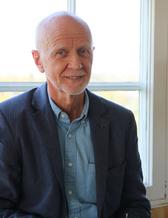
The Sjöberg Foundation has announced the award of grants totalling SEK 53.1 million, of which SEK 15 million goes to four cancer researchers and their projects at the University of Gothenburg. The foundation was established in 2016 by the Bengt Sjöberg, a businessman who donated SEK 2 billion to promote scientific research, with a main focus on cancer, health, and the environment.
“We have given definite form to the desire of my brother, Bengt, ‘to make a difference’ by focusing our support on two main areas: a ‘softer’ one, with preventive measures and care, and a ‘harder’ one, with early diagnoses and difficult-to-treat cancers with a poor prognosis,” says Ingemar Sjöberg, who chairs the Sjöberg Foundation.
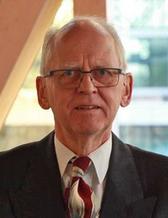
Of the four projects receiving funding at Sahlgrenska Academy, Lisa Tuomi’s project exemplifies a softer aspect, while the other three projects represent the latter area.
“I personally find it gratifying that Sahlgrenska Academy in particular has been allocated such large grants in light of the care shown to my brother from Sahlgrenska University Hospital,” says Sjöberg, who emphasizes that the selection is made by the foundation’s Scientific Advisory Board.
Ocular melanoma and sarcoma
Roger Olofsson Bagge has been awarded funding for his research on a combination treatment for metastases (daughter tumors) in the liver due to melanoma in the eye. Read more about this research here
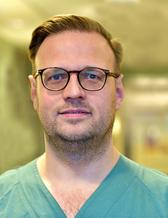

Anders Ståhlberg, adjunct senior lecturer at the Institute of Biomedicine, receives a grant for a project to develop and use blood sample analyses to tailor treatment of patients with various types of sarcoma.
“To achieve this, we will analyze circulating tumor-DNA and the composition of immune cells in patients over time, using ultra-sensitive sequencing techniques. Through simple blood tests, we can obtain specific molecular information that shows how effective a specific treatment is,” says Ståhlberg.
Blood-based biomarker analysis will potentially also allow for early detection of relapse and identification of treatment resistance, which opens up for alternative treatments.
“In the future, we believe that analysis of biomarkers in blood samples will provide important molecular information about the disease, facilitating clinical decisions that enable sarcoma patients to receive personalized treatments,” says Ståhlberg.
Improved jaw opening and swallowing function
Lisa Tuomi, an associate professor and University Hospital speech language pathologist at the Institute of Clinical Sciences, studies cancers of the head and neck. When patients receive radiation therapy, it is common they have difficulties opening their jaw and swallowing. The problems can occur in connection with the treatment, but they can also arise later and persist for many years.
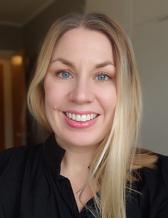
“The study began in 2019 and is investigating whether preventive jaw opening and swallowing training can affect these functions after completion of treatment. This training starts before the treatment and continues throughout the radiation treatment. We hope to include all patients in 2023 and be able to report results shortly afterward,” says Tuomi.
Much to gain
The study continues with annual follow-ups of all patients up to five years after the end of treatment to enable reporting of intervention results over a long period.
“If the patients improve their ability to open their jaw and swallow through the treatment, they will also be able to obtain more nutrition, maintain weight, and have a reduced risk of pneumonia. This also results in increased social contacts, improved quality of life, and, it is hoped, earlier return to work. This in turn can lead to reduced costs for society,” says Lisa Tuomi.
When breast cancer spreads to the brain
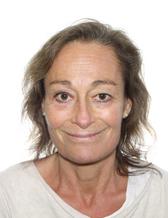
The purpose of Barbro Linderholm’s project “Expanding treatment options for patients suffering from breast cancer brain” is to investigate how the pharmaceutical olaparib affects patients with recurrence of homologous recombination deficiency (HRD) breast cancer with brain metastases.
Olaparib, an inhibitor of poly adenosine diphosphate-ribose polymerase (PARP), is a protein that plays an important role in the repair of damaged DNA and cell death. Cancer cells with a mutation in the BRCA gene need PARP to survive. Olaparib has also been approved for patients with hereditary breast cancer and with several other cancers.
“Patients with hereditary breast cancer have unstable DNA and a defect in the repair system, which enables PARP inhibitors to work,” says Barbro Linderholm, an associate professor of oncology and adjunct associate professor at Sahlgrenska Academy and chief physician specializing in breast cancer at Sahlgrenska University Hospital. “Patients without this heredity can also have these abnormalities, but in that case only in the tumor cells themselves. The hypothesis is that patients with HRD positive tumors can benefit from treatment with PARP inhibitors.”
Significant benefits from using olaparib in tablet form to treat patients
Hereditary breast cancer accounts for 3–5 percent of all breast cancers. A study by a colleague of Linderholm, Johan Staaf in Lund, has shown that 59 percent of primary triple negative breast cancers (TNBC) are HRD positive. And her colleagues in Breast International Group’s working team on central nervous system (CNS) metastases, which she coordinates, have detected HRD positives in 52 percent of CNS metastases in all breast cancer subgroups. This means that the group that can benefit from olaparib could increase significantly from 3-5 percent to about 50 percent.
“If the study leads to positive results, a significantly larger group of breast cancer patients could be treated with PARP inhibitors. The treatment is well tolerated and can be administered at outpatient clinics, an advantage for patients, of course, which also relieves the burden on our treatment department,” says Lindholm.
It is hoped that the study will start in 2022, with the first results expected in 2024.
This year’s recipients of grants:
- Roger Olofsson Bagge, “Regional treatment together with modern immunotherapy in the fight against uveal melanoma,” SEK 4.5 million (Institute of Clinical Sciences)
- Anders Ståhlberg, “Monitoring treatment efficacy in sarcomas using liquid biopsy analysis,” SEK 4.5 million (Institute of Biomedicine)
- Barbro Linderholm, “Expanding treatment options for patients suffering from breast cancer brain metastasis,” SEK 3 million (Institute of Clinical Sciences)
- Lisa Tuomi, “Improved jaw opening and swallowing function in patients with head and neck cancer following preventive exercise: a randomized study,” SEK 3 million (Institute of Clinical Sciences)
MORE FACTS ABOUT THE SJÖBERG FOUNDATION
The foundation also awards the Sjöberg Prize annually to a prominent cancer researcher or team of cancer researchers. This USD 1 million prize is awarded in close collaboration with the Royal Swedish Academy of Sciences. Most of the prize amount is earmarked for further research. In addition to the Sjöberg Prize, the foundation is estimated to be able to award SEK 60 to 70 million a year (read more about the foundation at Sjöbergstiftelsen.se).